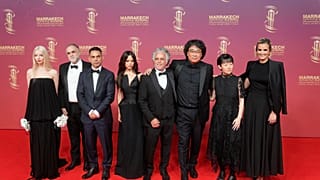Morocco
Chinese tourists flock to the Ksar Aït Ben Haddou, one of the most popular tourist destinations in southern Morocco.
They walk along the road leading to the historic village, passing by small shops displaying traditional Moroccan crafts.
These visitors are known for their passion for purchasing traditional gifts during their travels and show a special appreciation for local handicrafts.
They cross a bridge to begin their tour of the Ksar.
From a distance, the palace appears with its compact structure on the mud hill, its closely packed houses, and its dusty alleys.
The Ksar Aït Ben Haddou is a UNESCO World Heritage Site, giving it strong appeal for culturally-minded Chinese tourists.
"The main reason I chose Morocco is for multiple cultural reasons," says Xihao Chen, a tourist from Shanghai.
"Morocco is a blend of Arab, and Berber, and African, and European culture. So the cultural diversity attracted me to come to Morocco," he adds.
Groups wander through the stone alleys, eager to reach the top of the Ksar.
Inside one of the shops, traditional items such as small statues, leather bags, and copperware are on display, and visitors pause to explore them.
A Chinese tourist and her husband climb a steep path to the top of the Ksar, where they enjoy impressive views.
"One of the main reasons I chose to travel to Morocco this time is because I watched a North African film, which made me very fascinated by Casablanca and the customs and culture of Morocco," says Xiu Meng Qi, a tourist from Binzhou in Shandong Province.
Varied landscapes
According to the tour guides, it's Morocco's varied landscapes that appeal to Chinese tourists.
"The landscapes in Morocco are very different from those in China," says tour guide Wu Xiao from Shanghai.
"For example, there's the Sahara Desert described in Sanmao’s writings, the 'Red City' of Marrakech, and the ancient city of Fes which, to many Chinese, evokes the feel of an old yellow-hued civilization," he adds.
Whatever it is that is attracting Chinese tourists to Morocco, it's working.
According to tourism researcher Zoubir Bouhoute, tourism from China has grown hugely in the last 10 years.
"Before 2016, there were fewer than 10,000 Chinese tourists. However, after the decision by the King of Morocco to cancel visa requirements, their numbers saw a significant increase, rising year after year until reaching over 140,000 tourists in 2019," Bouhoute says.
Local cuisine
Also high on the agenda of most Chinese tourists is sampling the local cuisine.
A group enters a restaurant in Aït Ben Haddou and heads to the tables prepared for them.
They enjoy pumpkin soup, local bread and then a meat and prune tagine.
"This is the first time I try the Moroccan food. And the Moroccan bread, I like it very much, because although it's hard outside, it's very soft inside," says Judy Su, a tourist from Shanghai.
After eating, the group leaves the restaurant and heads towards waiting buses and on to the next stop on their Moroccan adventure.






![Simandou iron ore: Guinea’s mega project set to transform global mining [Business Africa]](https://images.euronews.com/articles/stories/09/56/12/99/320x180_cmsv2_293571cb-6ebf-5910-941c-1a2a07b4c53e-9561299.jpg)






01:39
Hong Kong: Death toll climbs as firefighters contain apartment blaze
00:51
Shanghai Marathon set to kick off on Sunday
01:00
High-rise fire in Hong Kong’s Tai Po district kills at least 36, with 279 missing
01:00
China pledges to work more closely with South Africa on range of issues
01:34
China to upgrade Zambia’s Tazara Railway in $1.4bn deal
Go to video
Nigeria dumps mother-tongue education - just as Ghana embraces it. Who’s it right?